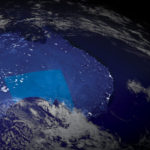Embrace the 4th industrial age or become a backwater

The world is on the cusp of a new industrial age—the fourth. As with previous industrial ages, those who embrace it first stand to become the dominant powers of the future and will seize the right to set the rules that define the age. Those that are late to the party will struggle to secure their place and avoid a decline into humanity’s future backwaters.
Australia has a choice to make: whether to undergo the social, political and cultural disruption that will result from the embrace of emerging technologies, or to continue to support an economy based on the status quo. In making this choice, Australia will also determine its security future.
One of the likely changes of the fourth industrial age to which Australia will need to adapt is the decline in relative value of primary resources and manufactured goods compared to information. The rapid growth of additive manufacturing (3D printing) demonstrates this point. 3D factories, using very few staff, are coming into existence. These factories have certain advantages over current means of production.
Being additive, 3D printers are very efficient and require less feed stock—iron ore for example—than traditional subtractive manufacturing. They can also be located anywhere, and be arrayed as individual units or in their thousands. That will promote distributed manufacturing.
Many countries in Asia, including China, have chosen to lift their people out of poverty by becoming the manufacturer to the ‘Walmarts’ of the world. That model will come undone when every Australian, European, American and even Asian home has a 3D printer with which families can print whatever they want, from food to high-quality clothes and beyond.
Value will cease to reside in the product, but will be found in the design. And as the economic foundations of the developing world fail, instability and social collapse in those countries may be the result.
Australia has its own perilous exposure to the coming disruptions of the fourth industrial age. After European colonisation of the continent, Australia developed into a maritime exporting country. There’s an Australian saying that the nation’s economy ‘rode on the sheep’s back’, although more recently iron, coal, education services and wheat, rather than wool, have been its more valuable exports.
Australia has always been a shipper of primary materials and is dependent on the regular dispatch of cargo ships from its shores and the existence of a rules-based world order that provides governance over global shipping lanes and the interaction between states for the regulation of trade.
Yet, as the value of things declines relative to that of information, it’s worth speculating on the effect this will have on Australia’ to continue to generate wealth via its material export paradigm relative to the potential of other countries.
Australia is committed to the maintenance of the current global order, but it’s an order that regulates the movement of things and one that was designed by a friendly ally, the United States. Who will set the rules for the movement of information in the fourth industrial age? Will it still be the United States, another nation or perhaps even a consortium of corporations? At this point in time we simply don’t know.
But it’s unlikely that the flow of information will remain unregulated across national boundaries. The Facebook–Cambridge Analytica scandal has assured that closer regulation of social media is coming. When the rules are written to govern the movement of wealth-generating information, will they be as favourable for Australia as those that govern the movement of goods and raw materials?
The transition to an information-trade–dominant world system also holds complications for the foundations of Australia’s defence policy. While there are deep cultural and historical reasons for Australia’s security relationship with Britain and the United States, it’s no coincidence that these countries also set the rules for the trading systems within which Australia generated its wealth.
As the context of Australia’s integration into the world economy evolves, it may be prudent to ask questions that challenge the traditional foundation of Australian national security.
Such questions might include whether the alliance with the United States will remain relevant or sustainable if the US ceases to be the upholder of the present rules-based order? Or, if a different rules-based order should emerge, will Australia need to define a relationship with the power (or powers) setting the rules for the fourth industrial age?
Obviously, this all lies in the future, and what I’ve written is just speculation. But the future doesn’t happen by accident, and this future is starting to take form now. Some of its elements, such as 3D printing machines, are becoming commonplace. Human integration with machines—the singularity as it is known—is more distant, if it’s even achievable or desirable.
The future is, in fact, the result of decisions made by the leaders and thinkers of the present. It’s their responsibility to shape the future. If they don’t, the winds of change may or may not push Australia towards a less favourable position than what we currently enjoy.
This article was published by The Strategist.
Albert Palazzo is the Director of War Studies in the Australian Army Research Centre. He has written widely on warfare in the modern age, with a focus on the Australian armed forces.








